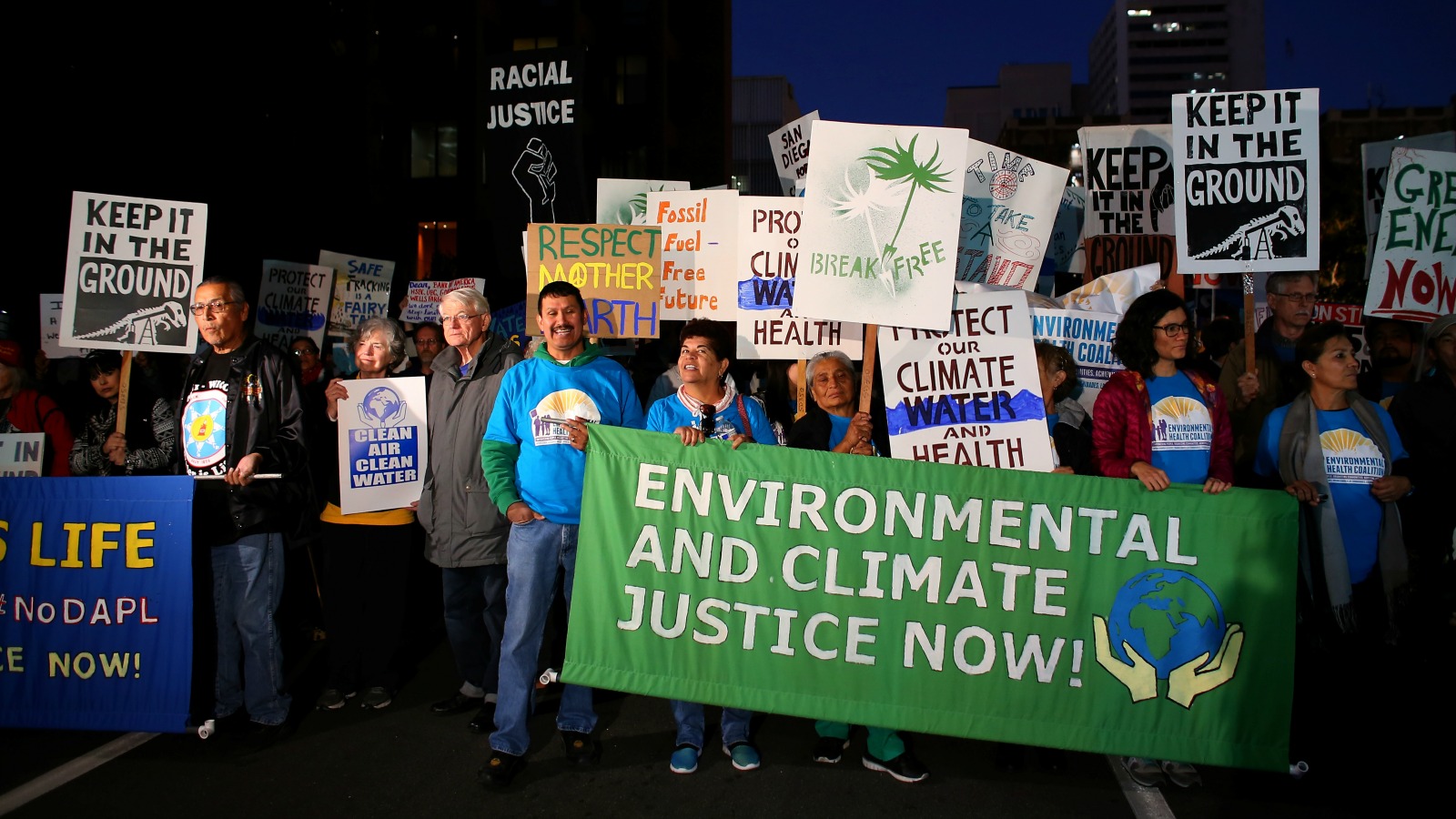This story was originally published by the Huffington Post and is reproduced here as part of the Climate Desk collaboration.
The White House wants to cut one-quarter of the Environmental Protection Agency’s funding and eliminate 1 in 5 EPA employees, three sources with knowledge of the proposed budget told The Huffington Post.
The fiscal year 2018 budget proposes axing funding for a vast array of programs, including those aimed at low-income people, minorities, and indigenous groups.
“While this ‘zero out’ strategy would impact nearly every community in the United States, a close examination shows the burden of these cuts will fall hardest on the health of low-income Americans and people of color,” Travis Nichols, a spokesman for Greenpeace USA, said in a statement. “This is environmental racism in action.”
The reductions target the implementation of the Clean Power Plan, the sweeping Obama-era regulation aimed at slashing carbon emissions from the utility sector, the country’s biggest emitter by far. The initiative has been stalled since the Supreme Court granted a stay last year in a lawsuit spearheaded by then-Oklahoma Attorney General Scott Pruitt, whom President Donald Trump named EPA administrator.
Axing the initiative undermines the country’s commitments in the 2015 Paris climate agreement, the first global deal to include the U.S. and China, the world’s biggest polluters.
The cuts the Office of Management and Budget put forward Monday do not appear to include reductions to the EPA’s capitalization fund, roughly $2 billion set aside as loans for states to improve sewers and drinking water infrastructure. That means the 25 percent reduction targets the EPA’s critical functions, including scientific research and enforcing rules against polluters.
“No cut like this has been proposed for the EPA since the early 1980s, in the first phase of the Reagan administration,” Stan Meiburg, a former acting deputy EPA administrator who spent 39 years at the agency, told HuffPost. “That didn’t ever get implemented, but it created a lot of chaos.”
The EPA budget totaled nearly $8.2 billion last year, a 0.22 percent sliver of federal spending. The agency employed about 15,300 people — one of its smallest workforces since 1989. Eliminating more than 3,000 positions would be “unprecedented,” Meiburg said, and would require buyouts and layoffs.
The EPA did not immediately respond to a request for comment.
The EPA has a brief window to appeal the budget cuts, after which time the proposal goes to Congress for approval. The OMB routinely puts some programs on the chopping block — including the Diesel Emissions Reduction Act, which helps pay for repairs to outmoded diesel engines, and a different program aimed at reducing exposure to lung cancer-causing radon gas — but Congress typically amends the budget to reinstate the funding.
“The OMB cuts, Congress puts them back,” said Meiburg, who oversaw the EPA budget for years. “They go through this dance every year.”
Public health programs were among those recommended for phaseout, including grants that cover screening for chemicals that disrupt endocrine systems.
The budget proposed cutting funding to programs that benefit communities of color, including grants to improve water and living standards for Alaska Native villages, grants for restoring nature along the U.S.-Mexico border, a program supporting minority-owned small businesses, and multipurpose grants that can go to states or Native American tribes.
Funding for scientific research and education — a sort of boogeyman among conservative lawmakers of late — took a hit, with proposals to zero out the Science to Achieve Results, or STAR, program, which funds research and provides recipients with a living stipend; environmental education and justice programs; and research into how to adapt to global climate change.
“It’s almost like I might as well just kill myself because I will have no protection,” said Cheryl Johnson, executive director People for Community Recovery, a 37-year-old nonprofit aimed at cleaning up polluted parts of Chicago’s inner city. “I won’t have the resources to be able to go and educate my community or educate even just my family about the environmental hazards in our community.”
The OMB also proposed eliminating basic programs for addressing pollution from beaches, fisheries, ozone-deteriorating gases, as well as programs for mapping out Lake Champlain, the Long Island Sound, and San Francisco Bay.
Even programs targeting revitalization of old properties or land — which could go hand-in-hand with Trump’s $1 trillion infrastructure plan — were proposed for elimination, including grants for brownfields, which are properties zoned for redevelopment but hindered by toxic waste.
The cuts should come as no surprise. Trump has assembled the most openly polluter-friendly Cabinet in recent history, putting climate science skeptics and fossil fuel executives in key environmental posts.
Trump named Myron Ebell, a once-fringe conspiracy theorist who shares the president’s view that global warming is a hoax, to lead the EPA transition team. He also nominated Pruitt, who sued the EPA 13 times as Oklahoma’s top cop and has deep ties to oil and gas companies, as EPA administrator. Pruitt was narrowly confirmed by the Senate last month.
“The Trump administration clearly sees corporations as its true constituents, not the people of this country,” Nichols said. “For decades, the Environmental Protection Agency has helped protect people’s health and safety when corporations have put them in danger, and the Trump administration now wants to undo all of that. These proposed cuts negate any goodwill Trump may have shown during his Congressional address, including his empty promises to promote clean air and water.”



